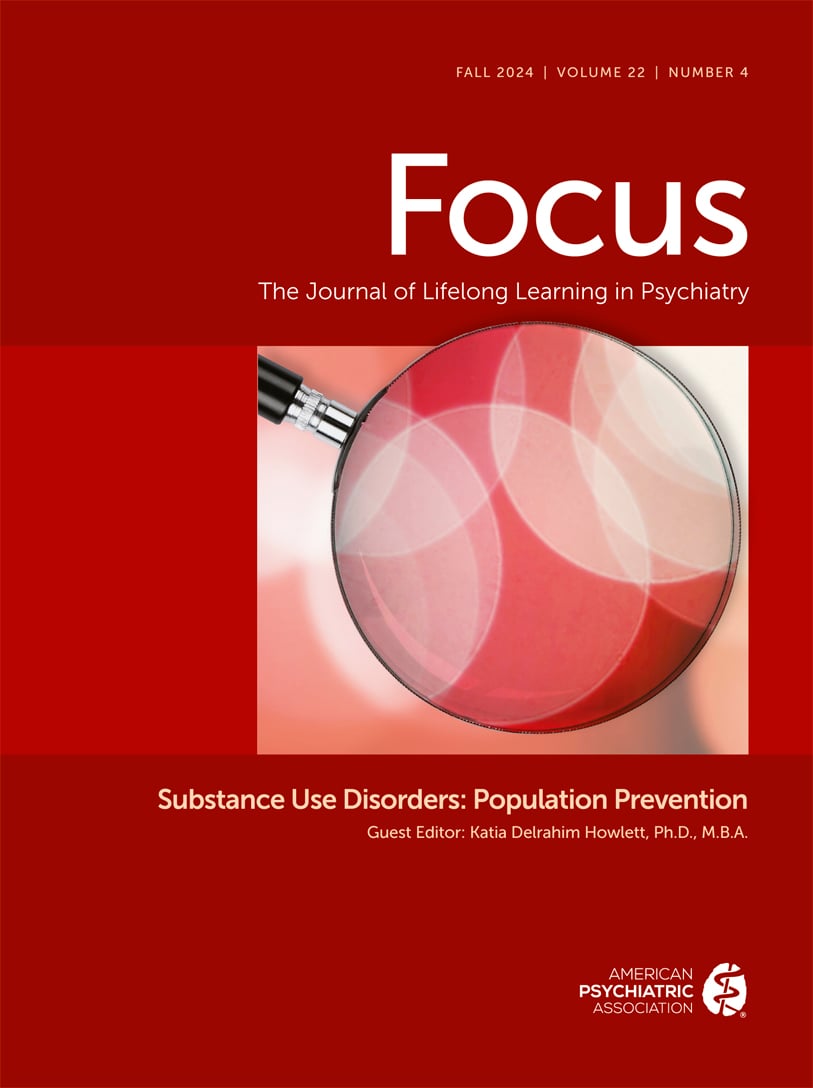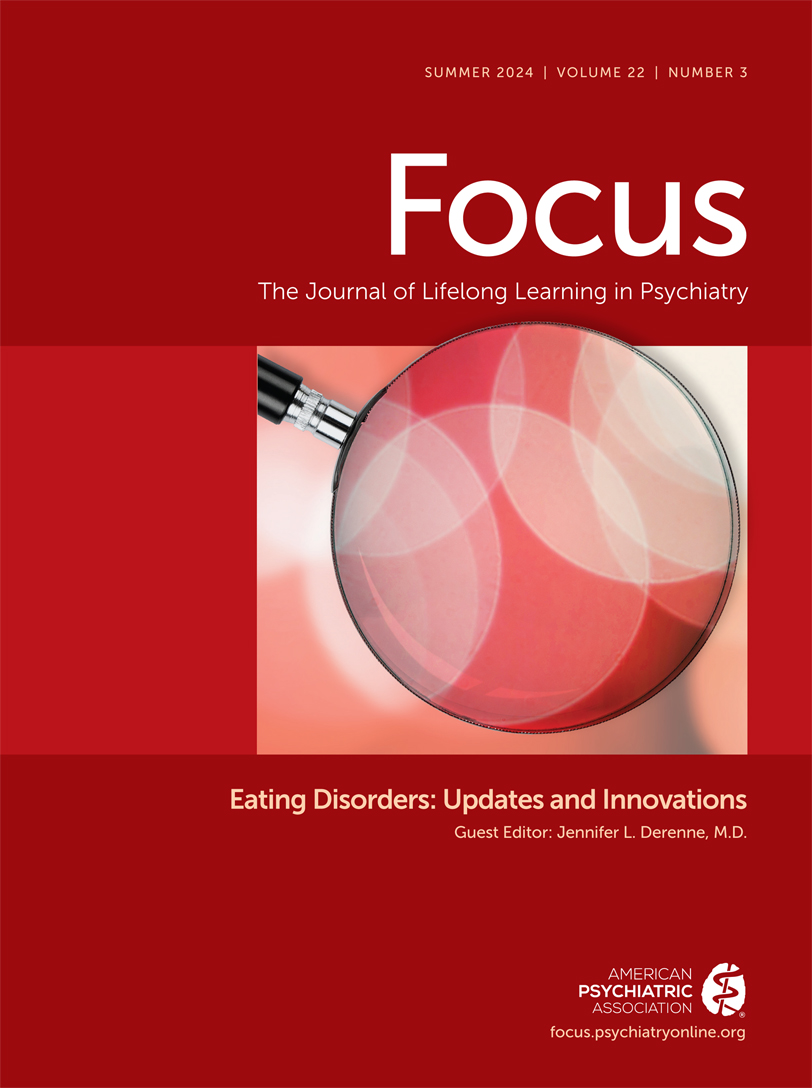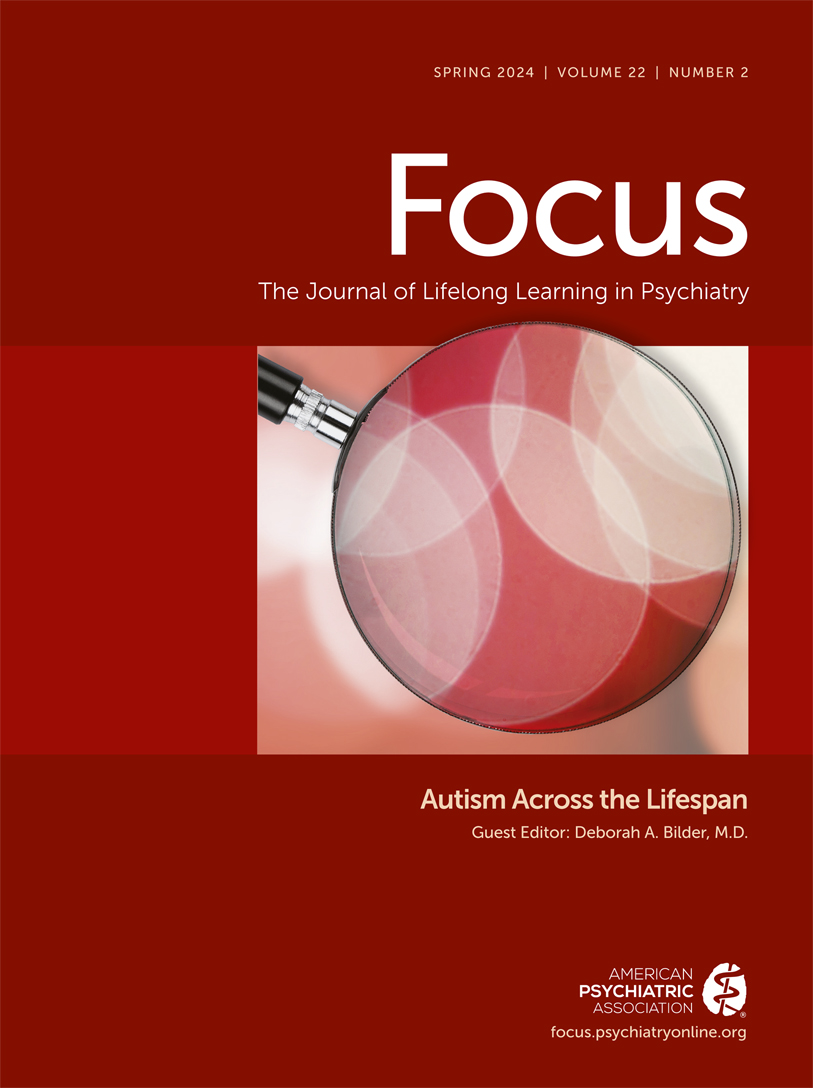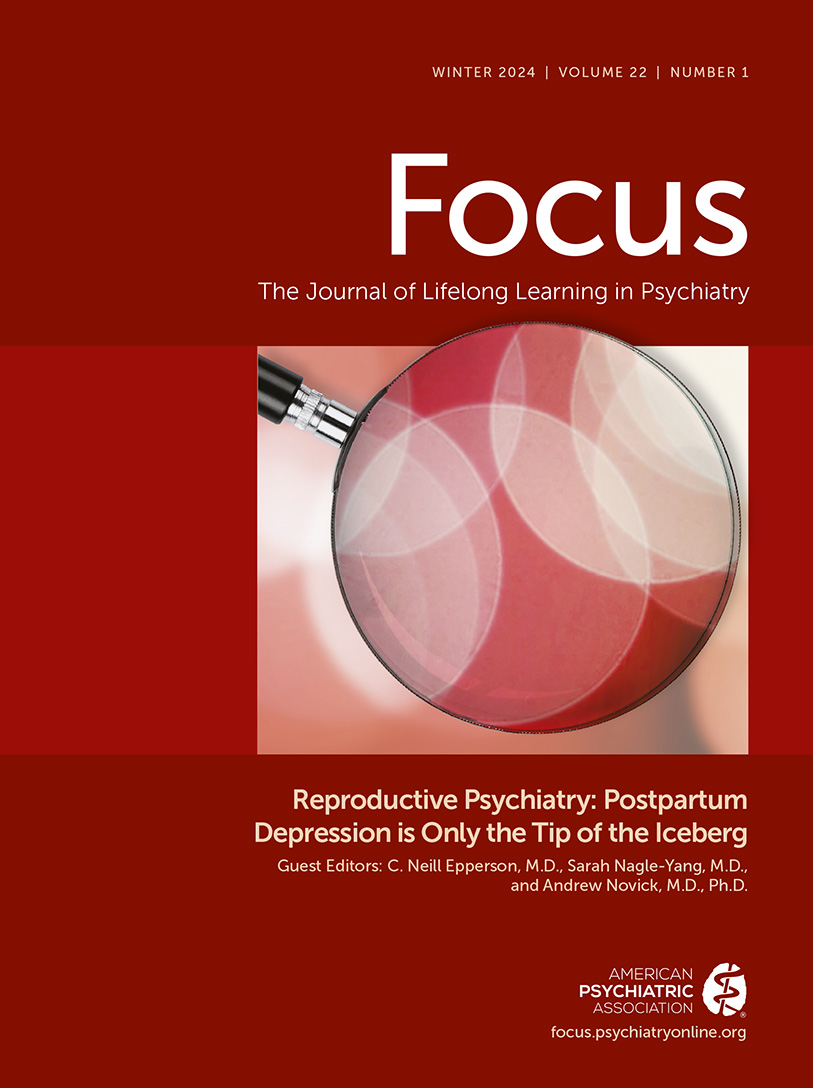Focus
- Volume 7
- Number 2
- April 2009
FROM THE GUEST EDITOR
CLINICAL SYNTHESIS
Publication date: 01 April 2009
Pages155–159Although most individuals are resilient, individuals who are exposed to trauma in mass casualty events have an increased rate of Posttraumatic Stress Disorder (PTSD), Major Depressive Disorder (MDD), other anxiety disorders such as Panic Disorder and ...
https://doi.org/10.1176/foc.7.2.foc155Publication date: 01 April 2009
Pages160–175The psychological and behavioral consequences of exposure to traumatic events—particularly combat—have been recognized throughout the ages. Since its 1982 introduction in the Diagnostic and Statistical Manual of Mental Disorders, 3rd edition much has been ...
https://doi.org/10.1176/foc.7.2.foc160Publication date: 01 April 2009
Pages176–183In this review, evidence for the importance of sleep-related disturbances in PTSD as a target for treatment is presented. Examination of efficacy studies of the first-line treatments for posttraumatic stress disorder (PTSD)—selective serotonin reuptake ...
https://doi.org/10.1176/foc.7.2.foc176Publication date: 01 April 2009
Pages186–203To facilitate continued clinical competence, the American Board of Medical Specialties and the American Board of Psychiatry and Neurology are implementing multifaceted Maintenance of Certification programs, which include requirements for self-assessments ...
https://doi.org/10.1176/foc.7.2.foc186INFLUENTIAL PUBLICATIONS
Publication date: 01 April 2009
Pages214–216This section contains a compilation of recent publications that have shaped the thinking in the field as well as classic works that remain important to the subject reviewed in this issue. This bibliography has been compiled by experts in the field and ...
https://doi.org/10.1176/foc.7.2.foc214Publication date: 01 April 2009
Pages221–242Given the devastation caused by disasters and mass violence, it is critical that intervention policy be based on the most updated research findings. However, to date, no evidence-based consensus has been reached supporting a clear set of recommendations ...
https://doi.org/10.1176/foc.7.2.foc221Publication date: 01 April 2009
Pages243–253Objective: This study examined use of mental health services among adult survivors of Hurricane Katrina in order to improve understanding of the impact of disasters on persons with mental disorders. Methods: A geographically representative telephone survey ...
https://doi.org/10.1176/foc.7.2.foc243Publication date: 01 April 2009
Pages254–273This article reviews the state-of-the-art research in posttraumatic stress disorder (PTSD) from several perspectives: (1) Sex differences: PTSD is more frequent among women, who tend to have different types of precipitating traumas and higher rates of ...
https://doi.org/10.1176/foc.7.2.foc254Publication date: 01 April 2009
Page274The field of neuroscience has, after a long period of looking the other way, again embraced emotion as an important research area. Much of the progress has come from studies of fear, and especially fear conditioning. This work has pin-pointed the amygdala ...
https://doi.org/10.1176/foc.7.2.foc274Publication date: 01 April 2009
Page290Ninety-six female assault victims with chronic posttraumatic stress disorder (PTSD) were randomly assigned to 4 treatment conditions: prolonged exposure (PE), stress inoculation training (SIT), combined treatment (PE-SIT), or wait-list control (WL). ...
https://doi.org/10.1176/foc.7.2.foc290Past Issues
View Issues Archive
Vol. 22 | No. 4

Vol. 22 | No. 3

Vol. 22 | No. 2
